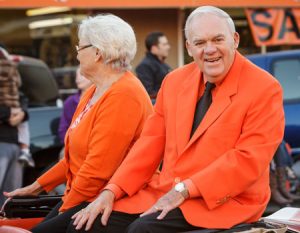
Since 1917, the University of Oklahoma’s Reserve Officer Training Corps (ROTC) has produced military leaders, including two Medal of Honor recipients, who made the difference in winning battles throughout the world.
Many of these early ROTC graduates from OU would fight in World War II, both in Europe and the Pacific. Others would fight in Korea, Vietnam and now Iraq and Afghanistan. As the nation remembers its veterans this Memorial Day, here are some who received their ROTC training at OU:
- John Lucian Smith of Lexington and Leon Robert Vance of Enid would earn the Medal of Honor for heroic action in World War II.
- Other OU grads including Hal Muldrow and Russell Dwight Funk would turn a potential military disaster into an Allied victory on the embattled beachhead of Salerno, Italy, in 1943.
This year marks the 100th anniversary of ROTC programs in America. The Oklahoma Military Hall of Fame will honor Oklahoma ROTC programs and alumni at its Hall of Fame banquet Oct. 21 at the Embassy Suites in Norman. Because this is ROTC’s Centennial, Maj. Gen. Douglas O. Dollar, of Stillwater, and an Oklahoma State University ROTC graduate, wants as many Oklahoma ROTC alumni as possible to be recognized for their service.
OU MEDAL OF HONOR recipients, Smith and Vance

Smith was commissioned an Army lieutenant of artillery at OU. He later resigned to accept a commission in the U.S. Marine Corps where he became a pilot. He became a Marine Corps Ace who shot down 19 Japanese planes and led his fighter squadron on many sorties, accounting for the destruction of 83 enemy aircraft. He was inducted into the Oklahoma Military Hall of Fame in 2010.
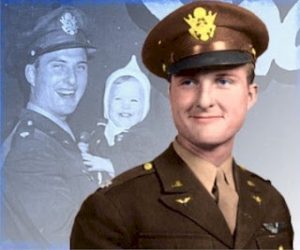
Vance entered OU and spent two years in ROTC. In his second year, one of the incoming freshmen and comrades in ROTC was Smith. After Vance’s second year, he was accepted by the U.S. Military Academy at West Point and graduated as an infantry lieutenant. He went to flight school and was assigned to the Army Air Corps.
On June 5, 1944, Vance earned his Medal of Honor in his second and final combat mission. He flew a B-24 in an Allied attack on German positions on the French coast one day before the Normandy Invasion.
Vance’s plane was damaged by anti-aircraft fire, wounding many of his crew. Vance, whose right foot was partially severed, still managed to fly the plane. It was too heavily damaged to land in England so Vance flew over the English Channel where his crew could safely bail out and be rescued. He then landed in the water. An explosion blew him out of the plane and he clutched a life preserver until he was rescued.
Two months later he was put on a plane for evacuation to the United States. The plane disappeared between Iceland and Newfoundland and was never found. His Medal of Honor was awarded posthumously. Vance Air Force Base in Enid is named after him. He was inducted into the Oklahoma Military Hall of Fame in 2009.
Salerno, Italy
ROTC was mandatory for most students at OU. And after college, many ROTC cadets including Hal Muldrow and Russell Dwight Funk joined the 45th Infantry Division, a National Guard Division that was organized in 1923 and would be mobilized for World War II and again for the Korean War in 1950. Funk joined the Division in 1923 and Muldrow joined it in 1928.
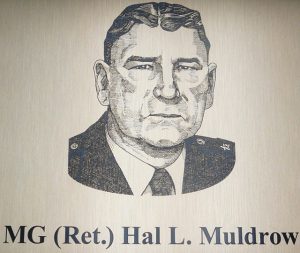 Muldrow, who lived in Norman, eventually would command the 45th. Funk, of Oklahoma City, would be a Colonel and would make the Army his career.
Muldrow, who lived in Norman, eventually would command the 45th. Funk, of Oklahoma City, would be a Colonel and would make the Army his career.
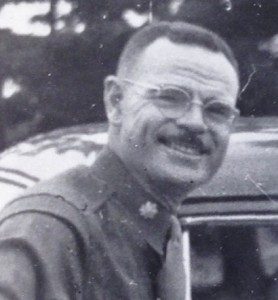
At Salerno, the two officers and their men would keep the Germans from winning the battle. During fighting at Salerno, Germans found a gap in the Allied forces that led to the ocean.
Intent on pushing the 45th and adjoining forces into the sea, the Germans launched a counterattack of tanks and infantry down that gap and toward the ocean. A volume of Time-Life Books World War II series said it best in crediting the 45h with saving the invasion.
“Between the German spearhead and the water stood only a handful of American infantrymen and some 105 mm guns of the 189th Field Artillery Battalion under Lt. Col. Hal Muldrow Jr. and the 158th Field Artillery Battalion under Lt. Col Russell Funk, both of the 45th Division,” Time-Life said.
The two artillery battalions fired eight rounds per minute per gun, “a rate perhaps unsurpassed by any artillery in World War II,” Time-Life said. Together, the two battalions fired 3,650 rounds, stopping the German attack and preserving the Allied beachhead.
Some additional notable OU ROTC graduates
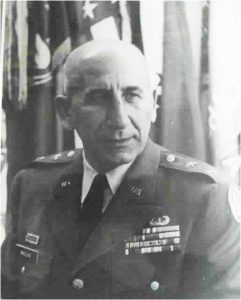
OU ROTC cadet Ernest L. “Iron Mike” Massad would join the 11th Airborne Division as a battalion commander of artillery and fight in the Pacific. Massad was an OU football player, basketball player and track man. He was named to several All-American football teams. He later was a Major General, commanding the Army Reserve’s 95th Division (Training). He held the three star rank when he served as Deputy Assistant Secretary of Defense from 1969 to 1970.
Bob Kalsu was a University of Oklahoma All-American tackle in 1967. Kalsu played one year for the Buffalo Bills and was named the team’s top rookie. He was an ROTC graduate and went on active duty after the 1968 football season. A Lieutenant in the artillery, Kalsu was killed in Vietnam on July 21, 1970.

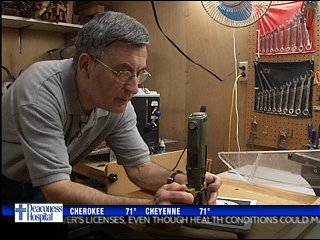
 Captain Robert J. Kelsey was born in 1945 at Lawton, Oklahoma. In June 1967 he received a commission in the U. S. Navy through the Navy ROTC Regular Program at the University of Oklahoma; he was selected to Phi Beta Kappa and graduated with a Bachelor of Science Degree in Mathematics and Physics.
Captain Robert J. Kelsey was born in 1945 at Lawton, Oklahoma. In June 1967 he received a commission in the U. S. Navy through the Navy ROTC Regular Program at the University of Oklahoma; he was selected to Phi Beta Kappa and graduated with a Bachelor of Science Degree in Mathematics and Physics.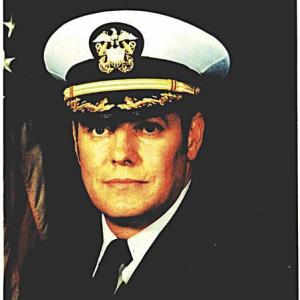 The scholarship endowment was established by the family and will be administered by the Oklahoma City Community Foundation.
The scholarship endowment was established by the family and will be administered by the Oklahoma City Community Foundation.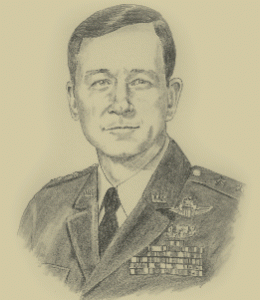 Major General Jerry D. Holmes, U.S. Air Force, was born 14 July 1935 in Jenks, Oklahoma and raised in Wewoka, Oklahoma. He graduated Wewoka High School in 1953. In 1958 he graduated The University of Oklahoma with a Bachelor of Science Degree in Geological Engineering and was commissioned a Second Lieutenant in the U.S. Air Force through the U.S. Air Force Reserve Officer Training Corps (ROTC). In 1964 he graduated The University of Oklahoma with a Master of Science Degree in Aerospace Engineering. He completed Squadron Officer School in 1965, graduated the U.S. National War College in 1976, and in 1985, graduated The Harvard University Program for Senior Executives in National and International Security.
Major General Jerry D. Holmes, U.S. Air Force, was born 14 July 1935 in Jenks, Oklahoma and raised in Wewoka, Oklahoma. He graduated Wewoka High School in 1953. In 1958 he graduated The University of Oklahoma with a Bachelor of Science Degree in Geological Engineering and was commissioned a Second Lieutenant in the U.S. Air Force through the U.S. Air Force Reserve Officer Training Corps (ROTC). In 1964 he graduated The University of Oklahoma with a Master of Science Degree in Aerospace Engineering. He completed Squadron Officer School in 1965, graduated the U.S. National War College in 1976, and in 1985, graduated The Harvard University Program for Senior Executives in National and International Security.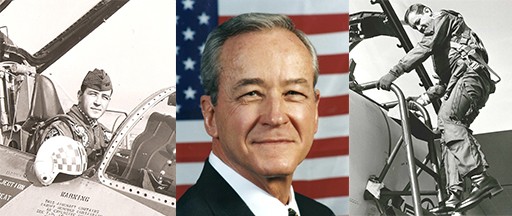 Maj. Gen. Holmes’ military awards and decorations include the Defense Distinguished Service Medal, U.S. Air Force Distinguished Service Medal, Legion of Merit, Distinguished Flying Cross, Bronze Star Medal, Meritorious Service Medal with Oak Leaf Cluster, Air Medal with six Oak Leaf Clusters, U.S. Air Force Commendation Medal with Oak Leaf Cluster, and the Outstanding Unit Award with “V” for Valor in combat.
Maj. Gen. Holmes’ military awards and decorations include the Defense Distinguished Service Medal, U.S. Air Force Distinguished Service Medal, Legion of Merit, Distinguished Flying Cross, Bronze Star Medal, Meritorious Service Medal with Oak Leaf Cluster, Air Medal with six Oak Leaf Clusters, U.S. Air Force Commendation Medal with Oak Leaf Cluster, and the Outstanding Unit Award with “V” for Valor in combat.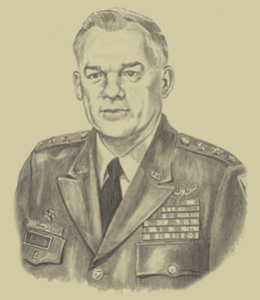 After a military career spanning more than three decades, Lt. Gen. Max Bunyard’s love for his country and serving others is obvious. Bunyard was standout baseball player at Oklahoma A&M College in Stillwater, and was a leader on and off the field. While at Oklahoma A&M, he was involved in the Army ROTC program, the Blue Key National Honor Society and served as president of the Sigma Chi fraternity.
After a military career spanning more than three decades, Lt. Gen. Max Bunyard’s love for his country and serving others is obvious. Bunyard was standout baseball player at Oklahoma A&M College in Stillwater, and was a leader on and off the field. While at Oklahoma A&M, he was involved in the Army ROTC program, the Blue Key National Honor Society and served as president of the Sigma Chi fraternity.